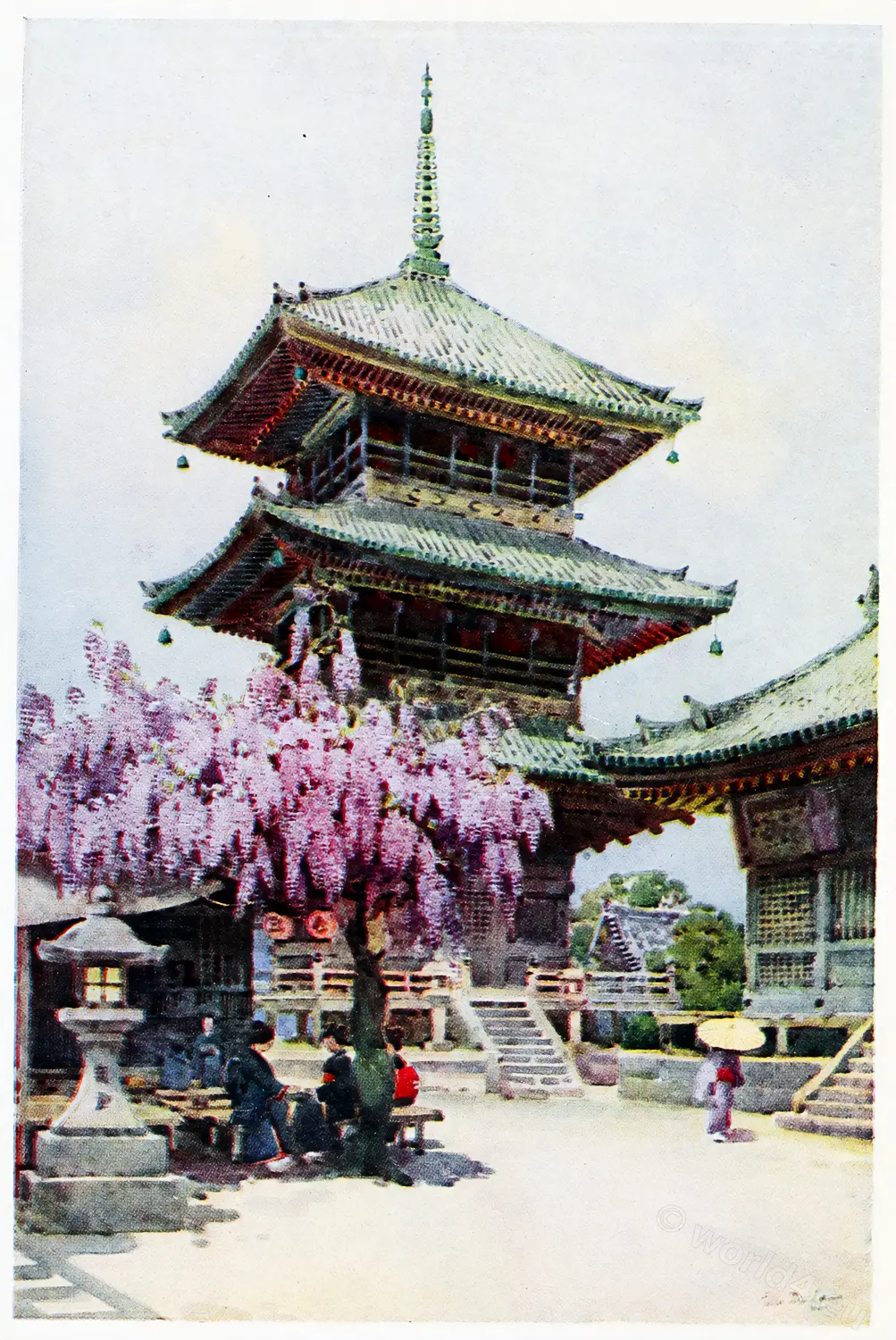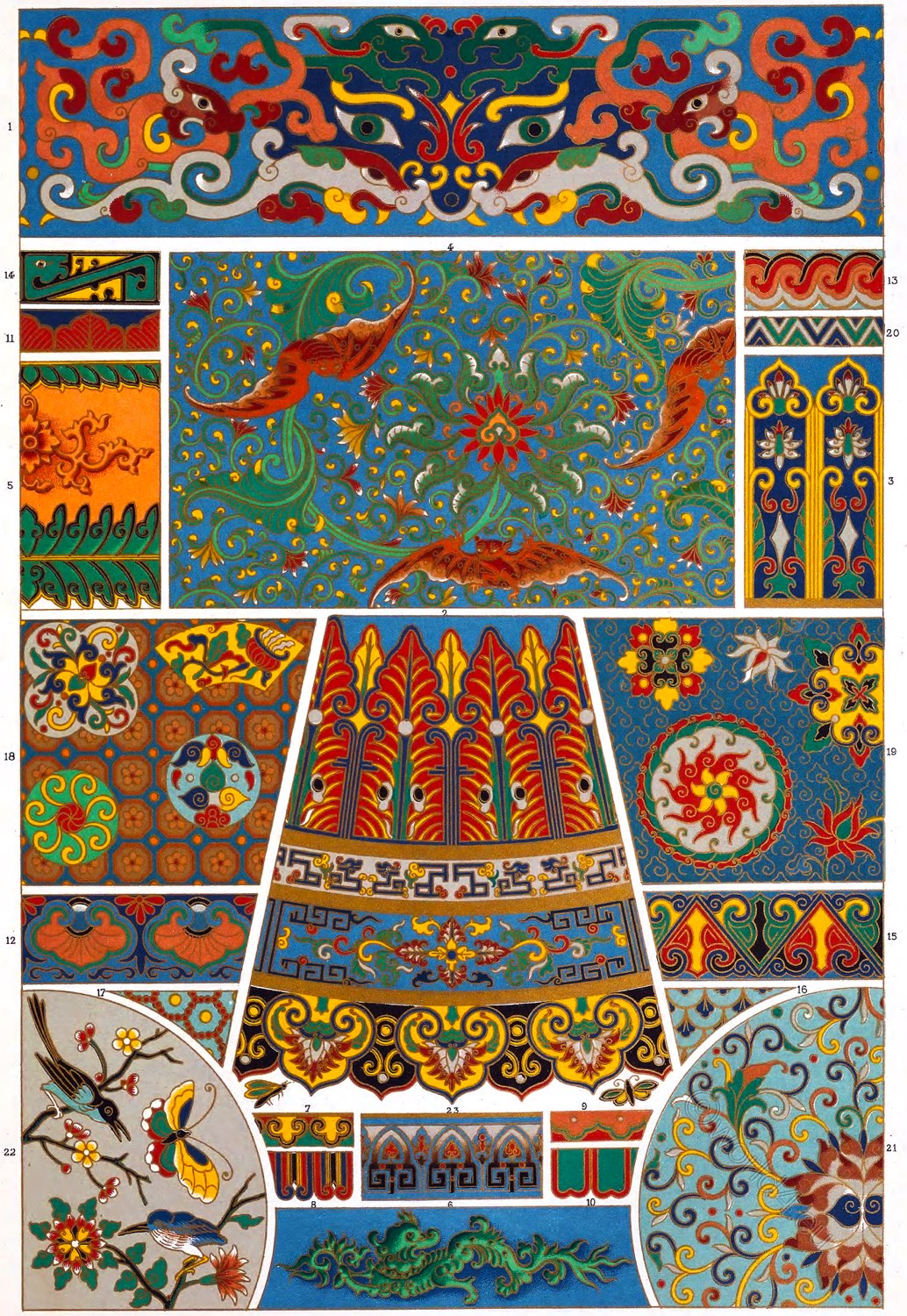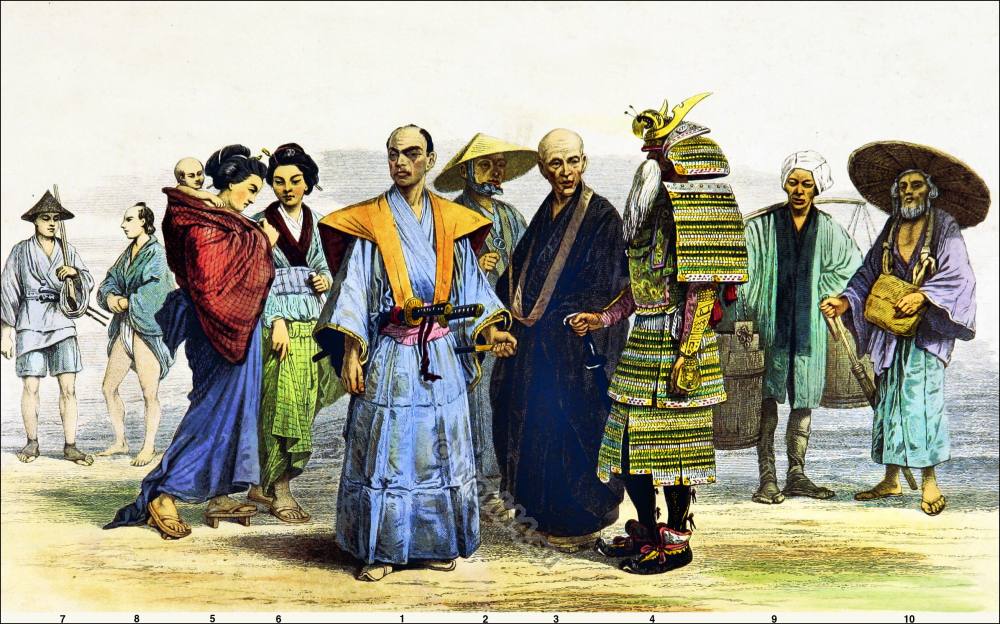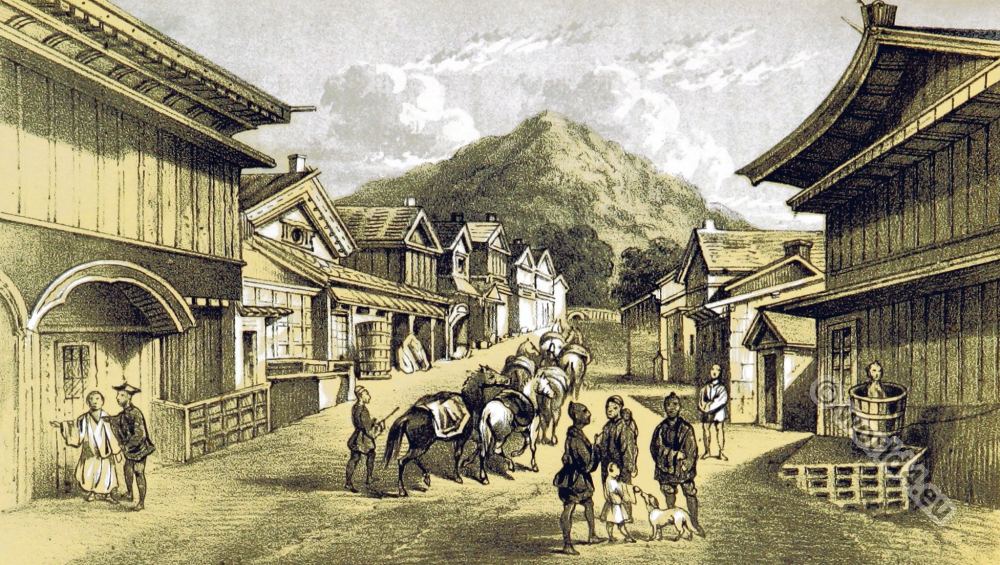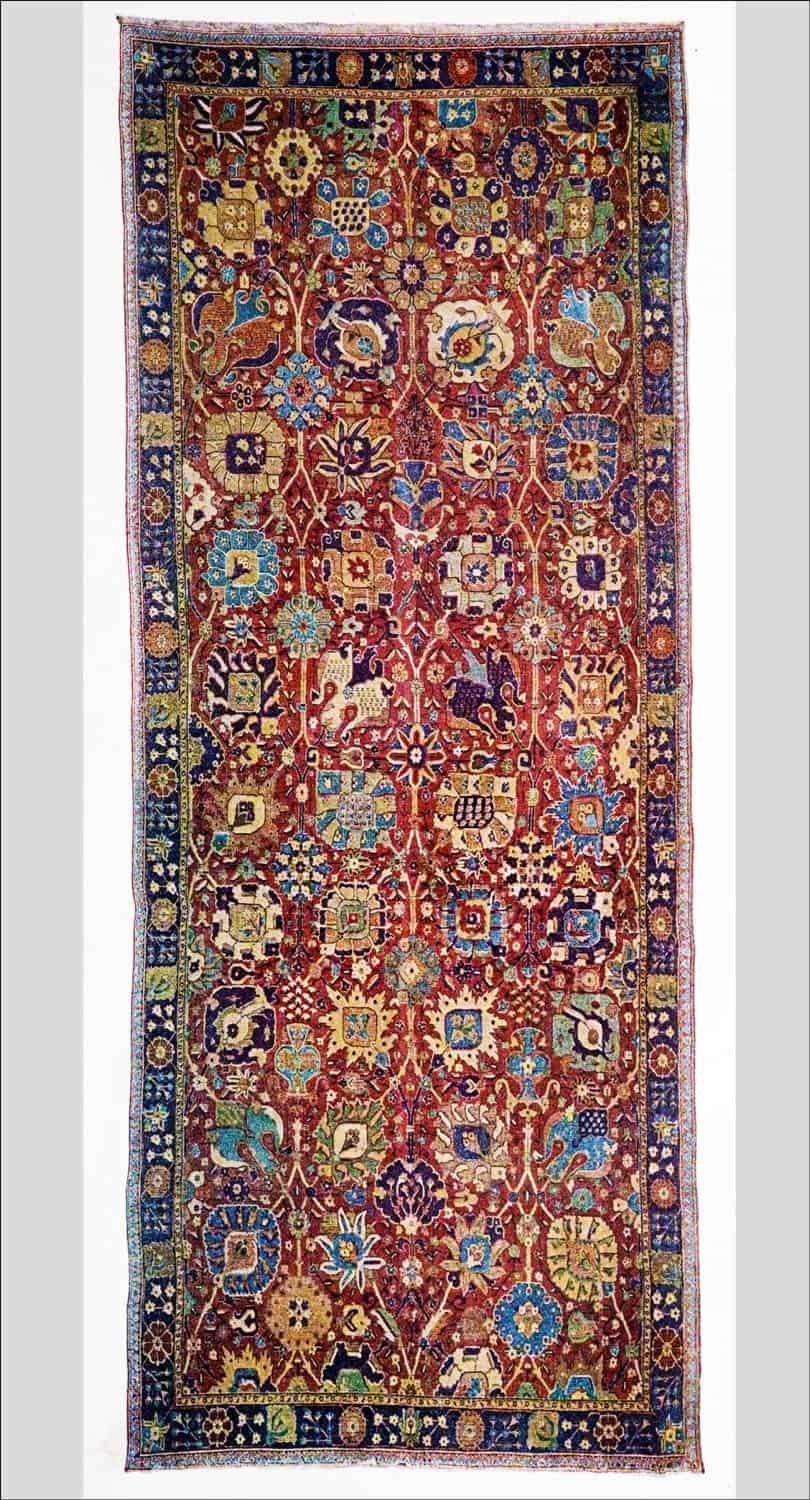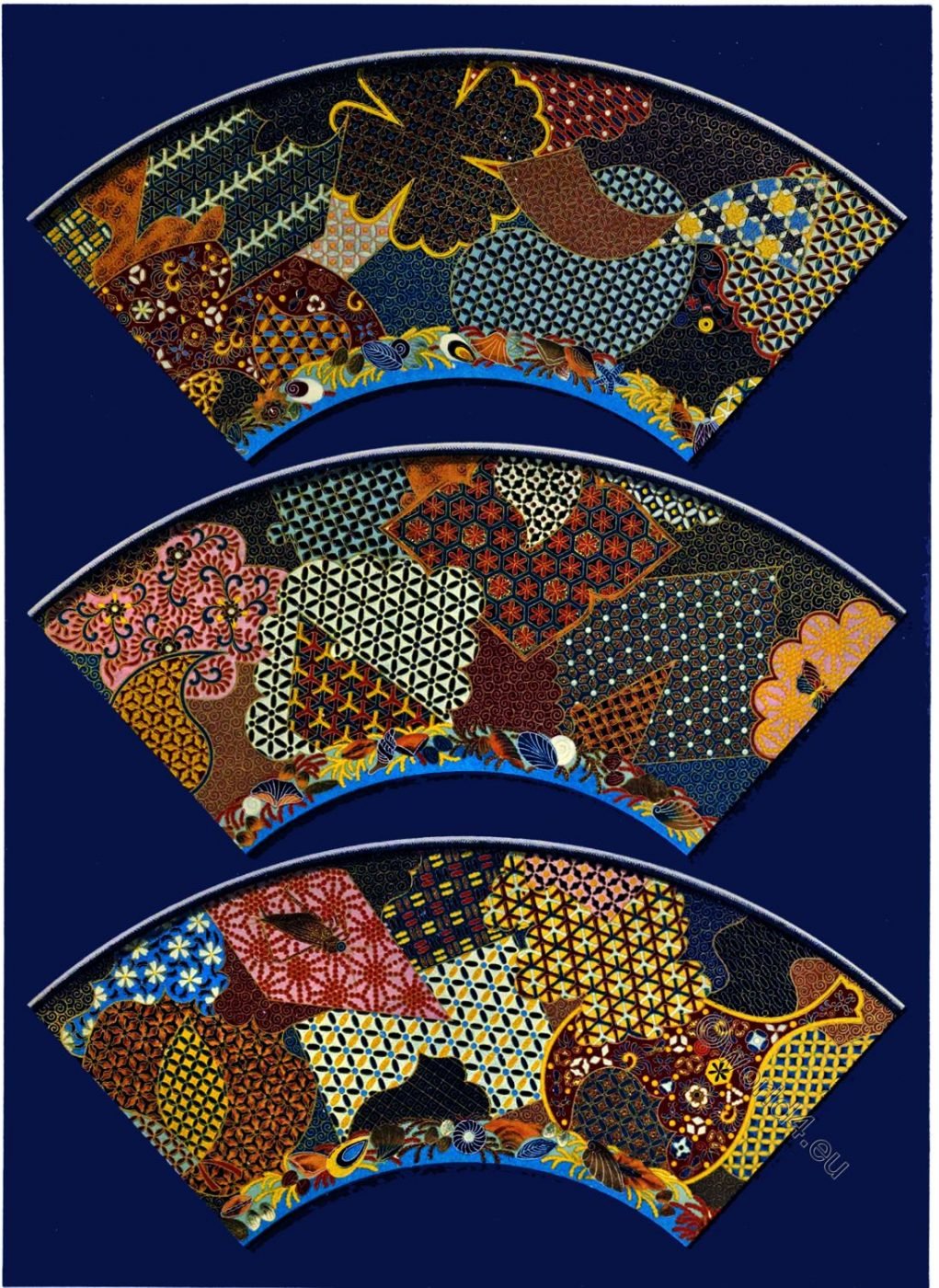
SECTION SEVENTH. – PLATE IV.
CLOISONNÉ ENAMEL.
Japan shippō-yaki design.
THE three segments of a circular border which are reproduced in this Plate, are taken from a tray of cloisonné enamel – one of the most perfect specimens of modern enamel which has reached us from Japan. The accuracy and beauty of the design and execution are equal to anything we have seen in the finest old work; clearly proving, in this art at least, that in manipulative skill the Japanese
The variety and harmonious arrangement of the colours here presented surpass anything met with in specimens of ancient Japanese cloisonné enamel, which are almost invariably sombre in their colouring. In the design and ornamentation of this beautiful Tray, the restless love for variety in form and treatment, inherent in the Japanese artist, is most fully exemplified; and in this respect the Tray resembles the Lacquer Box illustrated in Section Fourth-Plate 1.
The Tray is circular, flat, and with a slightly raised rim of silver. In its centre is a medallion of blue enamel containing the seated figure of a Court musician, carefully drawn with thin cloisons and richly coloured. The segments in the Plate represent about three-quarters of the broad border or ornamented ground which surrounds the medallion. The underside of the Tray is covered with simple spiral cloisons, and filled in with blue enamel. The finish of the entire work leaves nothing to be desired. Diameter 12 inches.
In the possession of Walter Macfarlane, Esq., of Glasgow.
Source: The ornamental arts of Japan by George Ashdown Audsley. Published by Sampson, Low & Co.; printed by Lemercier & cie., Paris, and W. Greve, Berlin, 1882.


